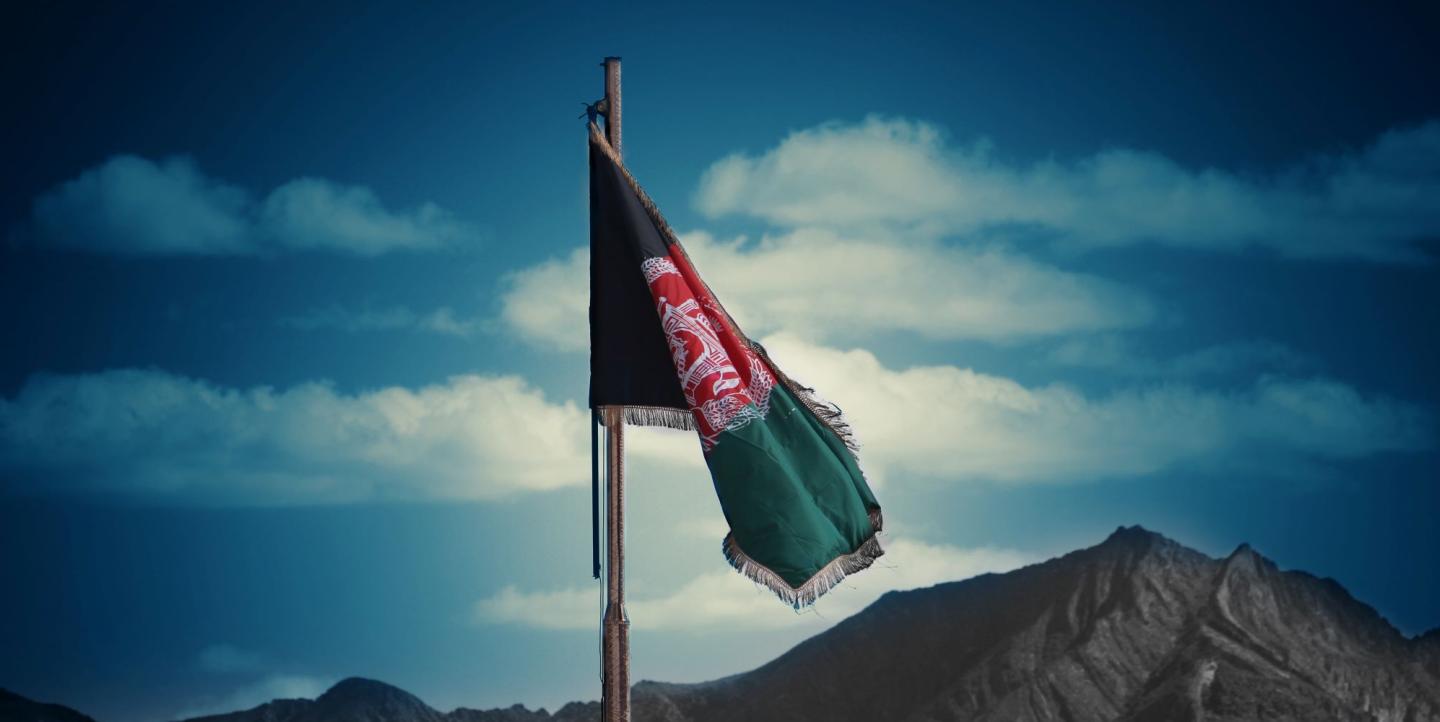Journalists in Afghanistan for two decades provided the public with vital news and information across a range of independent newspapers, radio stations and TV networks — a media ecosystem that they worked hard to build and strengthen. When the Taliban returned to power in 2021, everything changed in a matter of days.
“We are now looking at the ashes of what we created years ago, as the Taliban crack down with an iron fist on every free medium,” said Samiullah Mahdi, a prominent journalist from Afghanistan and now a program consultant at ICFJ. “It is very hard to watch how things you loved or have worked a life on are being destroyed brutally.”
Mahdi is the new editor-in-chief of Amu TV, a digital news platform he co-founded that brings together journalists from within and outside Afghanistan to provide independent reporting in Farsi and Pashto. The 2012 recipient of the ICFJ Knight International Journalism Award, Mahdi nominated another journalist from Afghanistan, Anisa Shaheed, for the award. A panel of judges selected Shaheed as one of the 2022 honorees who will be honored Nov. 10 at the ICFJ Tribute to Journalists.
In this interview with ICFJ, Mahdi describes what it is like for journalists today and what can be done to help.
ICFJ: When the Taliban took over last year, we saw reports of journalists being tortured, threatened and forced to abandon the country. What is the situation right now?
Mahdi: The figures speak for themselves. About 300 media outlets have been closed since 15 August 2021 in Afghanistan. Over 60% of journalists in total have lost their jobs. Over 85% of women journalists have lost jobs. More than 32 arrests and detentions by the Taliban have been reported. But many other incidents go unreported.
Many journalists were detained, tortured, beaten up by the Taliban with no explanation, especially during the very first days and weeks of Taliban takeover of Kabul. In one of the cases widely reported by international media, the Taliban arrested two journalists from a newspaper called the Truce. After they were released, the images of their bodies beaten up by the Taliban were published: The scars of the slashes were so brutal. Nobody ever provided any explanation; they were just covering a demonstration by women.
This is the environment now. The Taliban were going to newsrooms on a daily basis, giving instructions — what kind of stories journalists are allowed to cover and what kind of stories they shouldn't touch. Now, in some parts, especially in the Northeast, they ask journalists to send their agenda on a daily basis and get approval from the Taliban intelligence service. Nobody criticizes the Taliban, nobody can ask them about corruption or about their leaders. This leaves the society in Afghanistan without a free media and critical information to understand and analyze the situation.
You said 300 media outlets have closed down. Are they being forced to close?
In some cases it is because Taliban are threatening them. They are afraid that if they continue, the Taliban will punish them. In other cases, they have to close down because they no longer have any revenue. And I think that some newsrooms have decided to be silent instead of telling lies and becoming mouthpieces of the Taliban.
What kind of tactics are the Taliban using to silence journalists and pressure them?
The Taliban have been using different tactics and different approaches. They come to the newsrooms with their guns in their hands and instruct news editors and journalists what to do. They also summon the editors to their intelligence offices and tell them what to do. Or they just call or text presenters during or after the show, pressuring them: “Why did you ask this question? Why did you invite this person?” And then threatening you and your family and loved ones — these are direct threats.
They also try to control the owners of media outlets. So, if media owners start to obey the Taliban, the Taliban have managed to control journalists by default in most cases. Some media owners have already started “cooperating” with the Taliban and are giving their platforms to serve the Taliban’s narrative and agenda.
It’s important to understand the history. For many years, the Taliban has produced propaganda against journalism in Afghanistan, calling [journalists] the spies of the West. They have been killing journalists over the past 20 years, including my colleagues, people that I have worked with for several years. When I was working for Radio Azadi, Radio Free Europe/Radio Liberty’s branch for Afghanistan, they killed one of my colleagues, Eliyas Dayee, in the province of Helmand. He was receiving threats from the Taliban all the time. I was receiving threats at the same time.
If you receive a call saying, “Why did you ask that question?” or “Why are you running such a story?” this is a very, very serious threat.
What would you say to journalists reporting on what's happening there?
Just one thing: Focus on the people — the real life of people. That's the easiest way to tell the real story of Afghanistan. People are suffering since the Taliban took over. They do not have food. They do not have access to health. They do not have access to education. Violations of human rights and extrajudicial killings are happening on daily bases. These are the real stories, and this is the real face of the Taliban.
We need to understand that the Taliban are not the whole reality of Afghanistan. Over 60% of the population is under 25. This young generation has grown up with a very different set of values. They have experienced freedom of expression, women's rights, human rights and elections. They want to have a representative elected government. They want to have their say in the government, and they want to live a normal life like every other citizen of the world.
Instead, what is happening now is that we are losing another generation. The Taliban have banned girls from school. They have fired all women from the government. They have abducted several women activists and severely tortured them. The Taliban are imposing a severe censorship on media. They are involved in extrajudicial killings. They have formed their government entirely from one ethnic group.
Under the Taliban, a generation of people in the 1990s were lost because of the Taliban. Now we are experiencing the same thing.
What assistance is available for journalists in Afghanistan right now?
A few hundred journalists were able to get out of the country. But there are thousands who are still inside the country with no hope about the future, and they are reaching out to people asking for help. Most of us cannot do anything. This is really hard. This also leaves Afghanistan without some of its best newspapers available in print — they are only available online now.
What can be done to support Afghan journalists? Is there a way to support them in a meaningful way?
One of the things that journalists in exile are doing is connecting with those who are still inside the country. Journalists who are inside the country send footage, stories, leaks to those who are outside, and those who are outside produce the stories.
Yet, the space for free expression is shrinking. People feel they are being censored even inside their houses. They feel suffocated because they cannot express themselves freely. I am glad to say that ICFJ has launched a new program to support exiled media and journalists to keep reporting on Afghanistan. Such initiatives are incredibly important to keep journalism alive in Afghanistan.
What could be a solution?
I think keeping media and journalism alive will help to keep people of Afghanistan alive. If we want to know what is really happening in Afghanistan, document the situation and hold the Taliban accountable, we can only do it through journalism. Otherwise, the tragedies of the 1990s will be repeated. Displacement to different corners of the country, revenge, and murders will prevail. Only journalists can document it all and bring awareness about what's happening. Sending a reporter from a very far country for the first time to Afghanistan to stay inside Kabul for a few days and cover the story will not help a lot, because they cannot capture the full story.
If the world wants to help media in Afghanistan, they should help the local media there. That means empowering and enabling local journalists to tell their stories and the stories of daily life in Afghanistan under the Taliban. Safeguarding the free press and freedom of expression in Afghanistan should become a priority in any conversation of the international community with the Taliban.
Photo by Farid Ershad on Unsplash.
This article was originally published by IJNet's parent organization, the International Center for Journalists.


